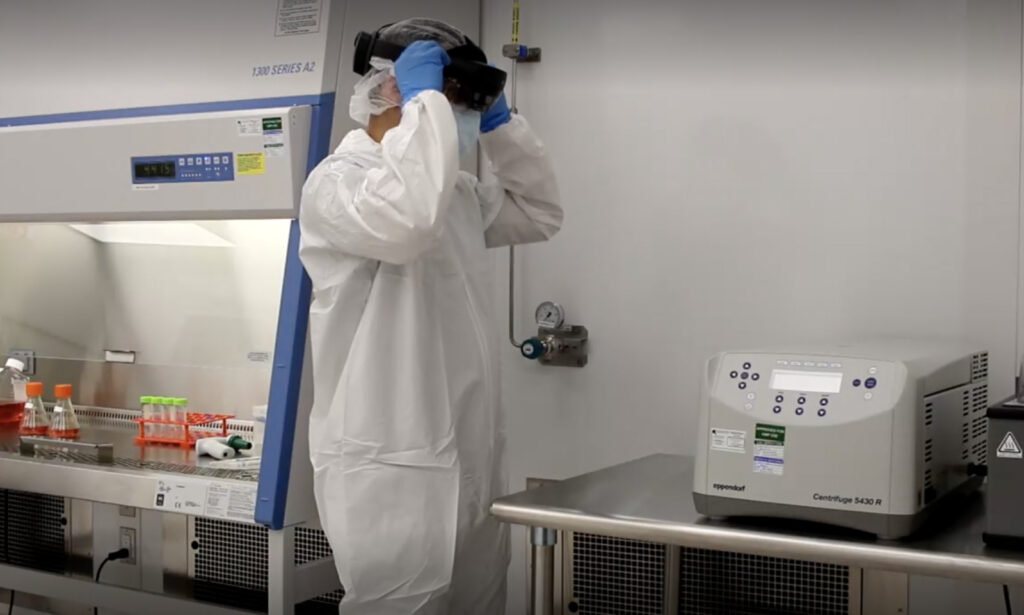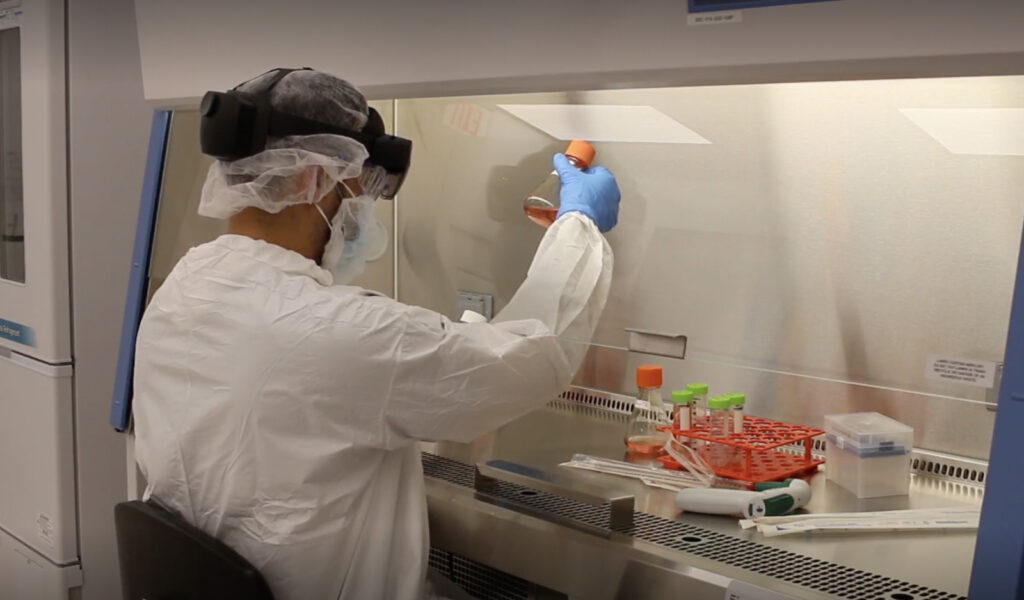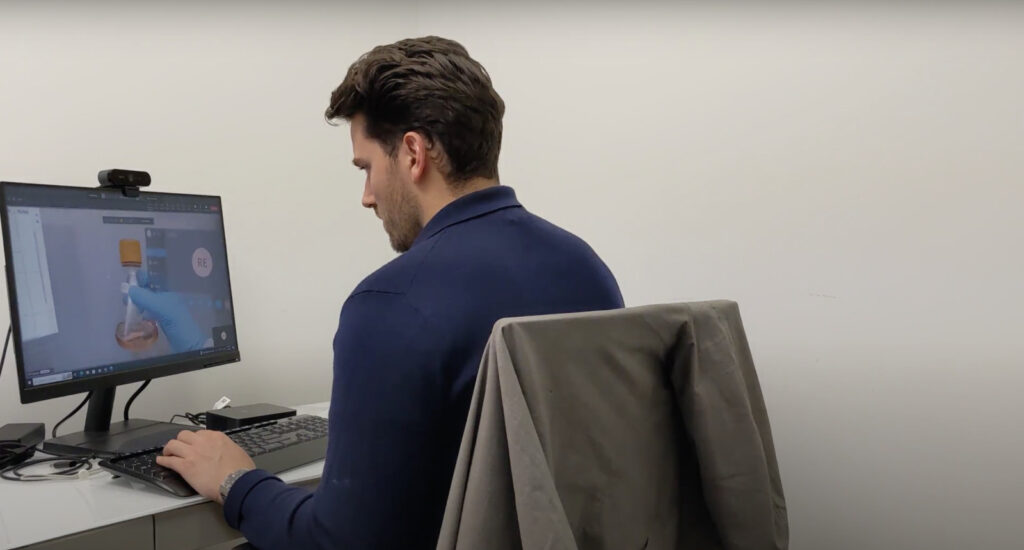Authored by Alex Klarer, BioCentriq’s Vice President of Business Strategy & Innovation
Cell therapies are developed in a lab by research scientists trained in microbiology, bio-engineering, and chemical engineering. For those therapies to be scaled up and manufactured for use in humans, the process developed at bench scale by scientists and engineers must be transformed so that it can be performed by a cell therapy manufacturing team. That manufacturing team must be experts in following GMP practices and aseptic techniques, know how to use upstream and downstream processing equipment, and repeat the same exact process, with little to no deviations, over and over again in a clean room.
Providing Physical, Face-to-Face Access to Expertise is Expensive
The underlying challenge is to replicate what the scientists discovered during development — the series of operations that led to promising results — and transfer the most critical aspects of that technology and knowledge to the team that can then scale it up and repeat it consistently in a GMP environment.
So, how do you do that today? You co-develop protocols and procedures that must be followed. You invite your new team to your labs, or you travel to them and provide hands-on training. If you are at a cell therapy CDMO (Contract Development and Manufacturing Organization), you go on-site and observe, or if your CDMO is highly collaborative, you can go on-site and participate in feasibility, pilot, and engineering runs. Then you can go back again to observe the initial clinical runs. However, that level of support is expensive and time-consuming.
Reduce the Cost of Accessing Experts with Virtual and Augmented Reality Tools
Enter the use of modern technologies that can either create a virtual reality or augment existing reality to reduce the time, effort, and costs associated with cell therapy development and manufacturing.
There is often confusion between virtual and augmented reality, so let us touch on that first.

Virtual Reality and Corresponding Use Cases
Virtual reality is when technology is used to present you with a reality different than the one you in which currently exist. If you have seen the movie “Ready Player One,” for example, it centers entirely around the idea of living in an alternative virtual reality. The characters in the film don a headset and enter a game in which they escape to a virtual reality far better than the depressing, post-apocalyptic reality they live in every day.
If you have not seen that movie, just imagine the experience of what happens when you put on an Oculus headset to enjoy a game of poker and are immediately taken to a table in some unknown casino with players you have never seen before. If you walk around with the headset on you may run into furniture or walls. You are blind to your physical reality and immersed in a virtual world.
The current use cases for virtual reality within cell therapy development and manufacturing are primarily focused on employee learning and upskilling. There are multiple companies now offering interactive experiences that immerse the learner in virtual worlds that range from laboratory to aseptic manufacturing settings and provide an engaging and cost-effective way of onboarding and training.
Since virtual reality allows you to escape into a new space, its application for training allows employees to experience rare or expensive situations with relative frequency. Virtual reality can become an invaluable tool for the preparation of GMP staff when included as part of a robust training program.
How Does Augmented Reality Work?
The experience of using augmented reality is different. You do wear goggles; they could be something like Microsoft’s HoloLens or they might be “smart” glasses. However, if we stick with the movie analogy, the experience of augmented reality is more like what you see in the Marvel movies, when Tony Stark is presented with visuals and speaks directly to Friday when he is inside his Ironman suit. He is not blinded. He can still see his current reality; it’s just augmented or improved to help him accomplish amazing feats.
The use cases for augmented reality in cell therapy development and manufacturing can include employee training and upskilling, but the possibilities are more far reaching at the moment. The upfront cost to deploy virtual reality is also lower.
The time and effort involved in developing and deploying augmented reality is dramatically lower; however, you still have some limited involvement from subject matter experts. For some use cases, one would argue that their ongoing involvement is what drives successful outcomes and makes it well worthwhile.

How Can the Use of Augmented Reality Improve Timelines and Reduce Costs?
With augmented reality, you put the technology in the hands of the individuals to allow them to receive remote assistance and direction. For example, you might use an AR headset at your manufacturing facility or CDMO.
If you are doing development work at the CDMO, the AR headset can be provided to the engineers working on your process, and you — the sponsor development team — can dial into a video conference call and see what they see. You can comment on what they see or how they are conducting a unit operation or manipulation and provide feedback. You can drag content — videos, pictures, or documents like protocols — onto the screen and present it to them so that guidance is literally right in front of them as they work.
This allows you to move faster during knowledge transfer and process development. The engineers learning your process do not have to leave the bench and schedule a call to share information with you, and you do not have to take pictures and send them back and forth or try to make sense of a verbal or written description of what they are seeing. Even better, as they are gaining knowledge about your process, you do not have to fly or drive to your operations team or to your CDMO to demonstrate things for them or troubleshoot. You can do it all virtually!

Augmented reality can be utilized in any non-GMP environment to support critical activities such as:
- Initial knowledge transfer
- Troubleshooting during feasibility runs
- Confirmation of key maneuvers during tech transfer
- Demonstration of proposed process improvements
- Validation of results in pilot runs
- Training of operators prior to GMP runs
- Developing competency among Quality Control analysts performing analytical methods
The impact on timeline and costs is tremendous and well worth the nominal investment in hardware. There is hope that augmented reality hardware will one day stand up to the rigorous cleaning protocols required for it be brought into a clean room, and then it will become a viable use case for remote assistance for GMP operations, replacing the need for on-site subject matter experts and excessive and expensive PIP (partner in plant). As of today, besides addressing GMP and quality related considerations, the number one challenge is finding hardware that can stand up to the cleaning requirements.
In the meantime, BioCentriq is eagerly working to advance and understand the capabilities of augmented reality, which is why, as a flexible and collaborative CDMO, BioCentriq already implements this technology where possible and will be on the forefront of implementing it in clean suites to offer clients the earliest access to virtual PIP experiences with the advent of GMP-approved technology.
The following video does an excellent job of demonstrating the use of augmented reality to help accelerate timelines and reduce costs. It focuses on the use case of remote assistance during development or tech transfer.
The Bottom Line
Modern technologies, such as virtual and augmented reality, have a role to play in the industry’s quest to accelerate and improve cell therapy development and manufacturing while reducing costs to improve patient access.
The use case for virtual reality is primarily in improving employee training and upskilling, and the business benefits there are clear.
The use for augmented reality centers around the concept of facilitating the act of providing remote assistance from subject matter experts. It’s easy to see how and where augmented reality can be introduced to reduce cost, streamline timelines and improve the effectiveness of activities that take place during knowledge transfer, method qualification, feasibility and pilot runs, GMP-readiness, and more.
We encourage you all to make use of augmented reality in your collaborative efforts between your research team and your process development, MS&T (Manufacturing, Science, and Technologies), AMD (Analytical Method Development), quality control, and manufacturing teams. The opportunity for savings and increased speed may be even greater if you are partnering with a CDMO. Do not miss the chance to reduce costs, streamline activities, improve communication effectiveness, and get your therapy to patients faster. If you have any questions, please contact us to ask about our Virtual PIP offering or email info@biocentriq.com to learn more.